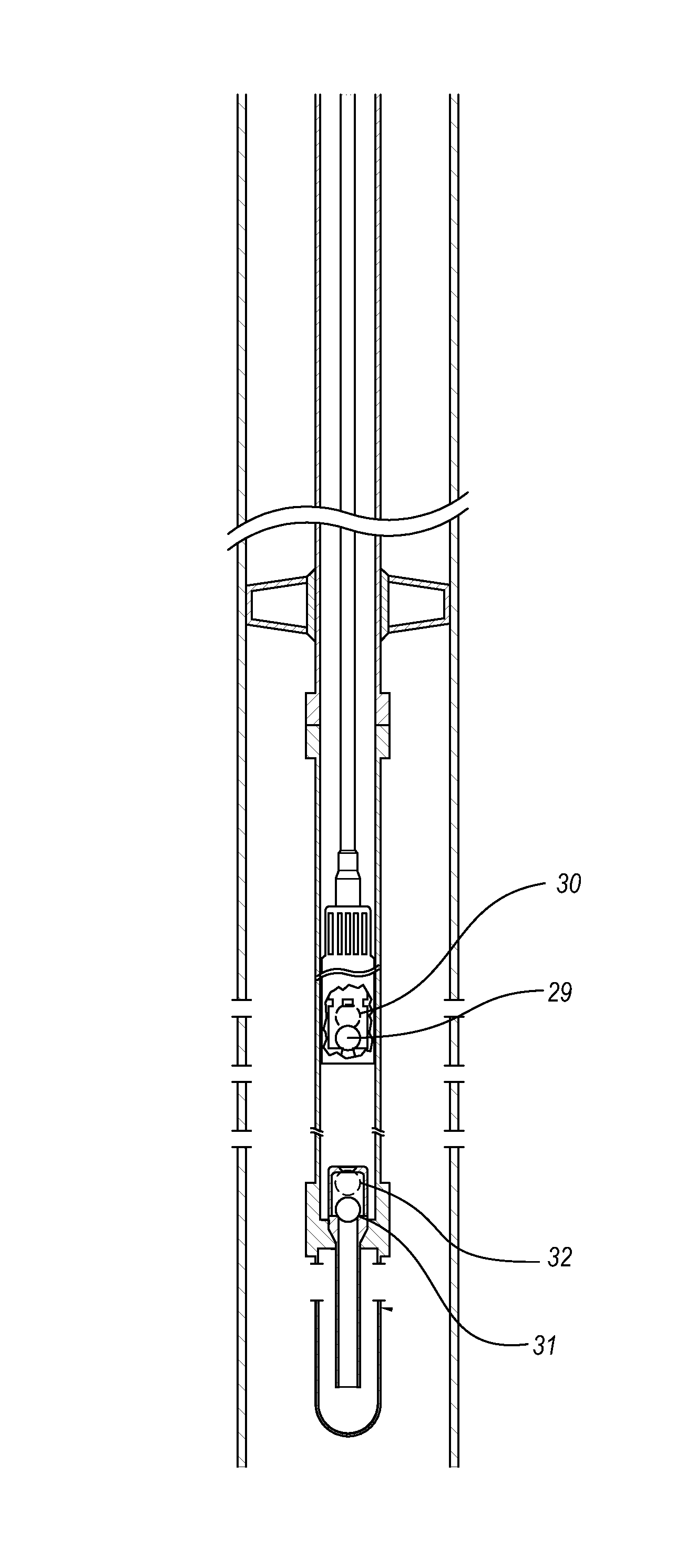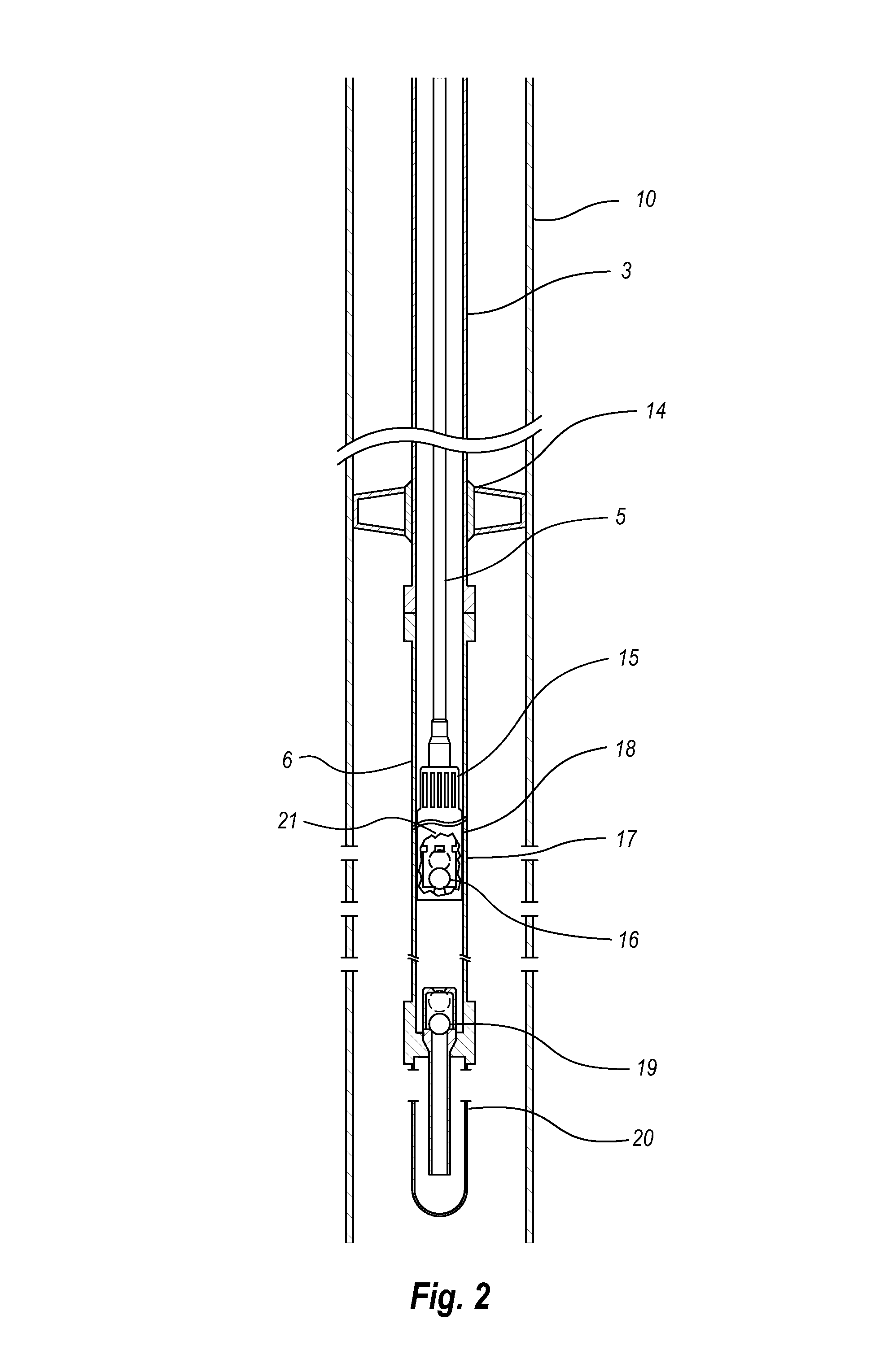Mechanically counterbalanced surface units have tremendous amounts of moving
inertia, rendering them very difficult to stop and hold a given position upon command, hence it is not feasible for them to stop and dwell at the top of the polished rod lifting cycle.
Since they are by nature all mechanical it is impossible for them to vary their polished rod travel distances autonomously.
Their ability to stop and hold polished rod position is also severely compromised due to the manner in which the
high pressure nitrogen gas is utilized to counterbalance the well.
Well production, operating costs and potential failures down-hole are all affected by excessive leakage amounts.
Well production, operating costs and potential failures down-hole are all affected by excessive leakage amounts.
Tremendous stress and strain to the entire well installation is caused by fluid pound.
Since the pump is not being adequately filled on every intake
stroke daily production rates decline in a direct ratio to pump fillage.
Similar damaging results occur with gas pound also called gas lock as found with fluid pound.
Production also suffers due to lack of fluid being pumped.
A pump-off situation will likely increase the gas intake within the rod pump itself, thus reducing the pump efficiency, also called gas pound.
The
workover process cannot begin until the well has been killed which severely restricts or limits
hydrocarbon transfer from the reservoir formation into the well bore.
There is no guarantee the well will produce as it did prior to being killed.
As existing oil and gas wells can no longer be economically produced using other forms of
artificial lift such as ESP or PCP or
gas lift or
plunger lift or hydraulic lift it is very common industry practice to switch to rod pumping.
Due to lowering bottom-hole pressures the other forms of
artificial lift are unable as well as not economically feasible to maintain current production levels.
However, they must be operated correctly or costly failures will and do occur, which again hinders production and increases the total cost of producing the hydrocarbons from the oil or gas well.
The dimensional difference of
plunger and working
barrel is the running clearance of the pump which can change over time by getting damaged with scratches and other forms of damage throughout the operational life of the installation.
When the rod pump installation continues to remove ground fluids, at some point the
coal bed may be effectively pumped off, not able to fill the working
barrel with fluids during the intake cycle, if at least temporarily.
Extended
operating time of the rod pump equipment without sufficient amounts of down-hole fluid fillage of the working barrel will cause serious damage to the total well installation.
Mechanically driven and counterbalanced surface units are unable to autonomously adapt to these changing down-hole inflow conditions.
They are not able to add dwell time at the top of the pump intake
stroke, nor are they able to adjust their total polished rod travel autonomously while operating.
Rod heavy conditions produce massive over running inertial torque values which must be dissipated into heat or regenerated with additional hardware further increasing cost of installation.
If the inertial torque values are not managed variable speed drive
high voltage bus faults occur and drive internal overload limiters shut the drive down.
Further adding operating costs for dispatching a human to cycle the power on and off at the location to reset the drive plus lost production.
During the time the
coal bed methane well sits idle, the rod pump equipment not operating, ground fluids refill the
coal bed seams, raising bottom-hole pressures,
choking off the
natural gas produced from the well.
All three leakage factors directly affect total well revenue by reducing daily
hydrocarbon production and increasing daily operating costs.
Down-hole pump leakage also called pump slippage or slippage factor or slippage rate affects the daily fluid or gas production volumes and the total well
system efficiency, hence costs of operating.
Some of these leakage sources or slippage factors are caused by the traveling valve, standing valve and tubing string.
Running clearances increase as the life of the down-hole pump increases or gets damaged thru the course of normal operation at varying degrees over time.
As pumps begin to wear; the total slippage or leakage factor increases over time and number of pumping cycles.
All of the above conditions directly affect the
daily production of the well and hence the total
operating cost of the entire oil or gas well installation.
Sometimes the
testing equipment is installed and removed while the surface unit is running but that is not typically the safest operating practice.
If the entered information is not correct it will directly affect the testing results
Not setting the
brake quick enough may allow the rod string to fall downward possibly damaging the well installation
Polished rod is held stationary by the braking device, if it moves the test results will be affected
Not setting the
brake quick enough may allow the rod string to fall downward possibly damaging the well installation
Polished rod is held stationary by the braking device, if it moves the test results will be affected
Substantial
technician effort and coordination in correct sequences of operation plus safety procedures and
resultant costs are required for a well to be properly and safely tested using a
dynamometer.
Due to these costs it is common that wells are only tested when a problem is suspected or
production rate declines or stops due to a failure of some type.
Changing total polished rod stroke travel or changing the mechanical counterbalance weights requires physical alterations of the surface unit plus heavy
lifting equipment and adding or removing heavy counterbalance masses plus more manual human effort.
The foregoing do not provide for
dynamometer accuracy but rather are gross means of detecting and preventing the damaging effect of fluid pound as reservoir down-hole conditions change.
 Login to View More
Login to View More  Login to View More
Login to View More 


